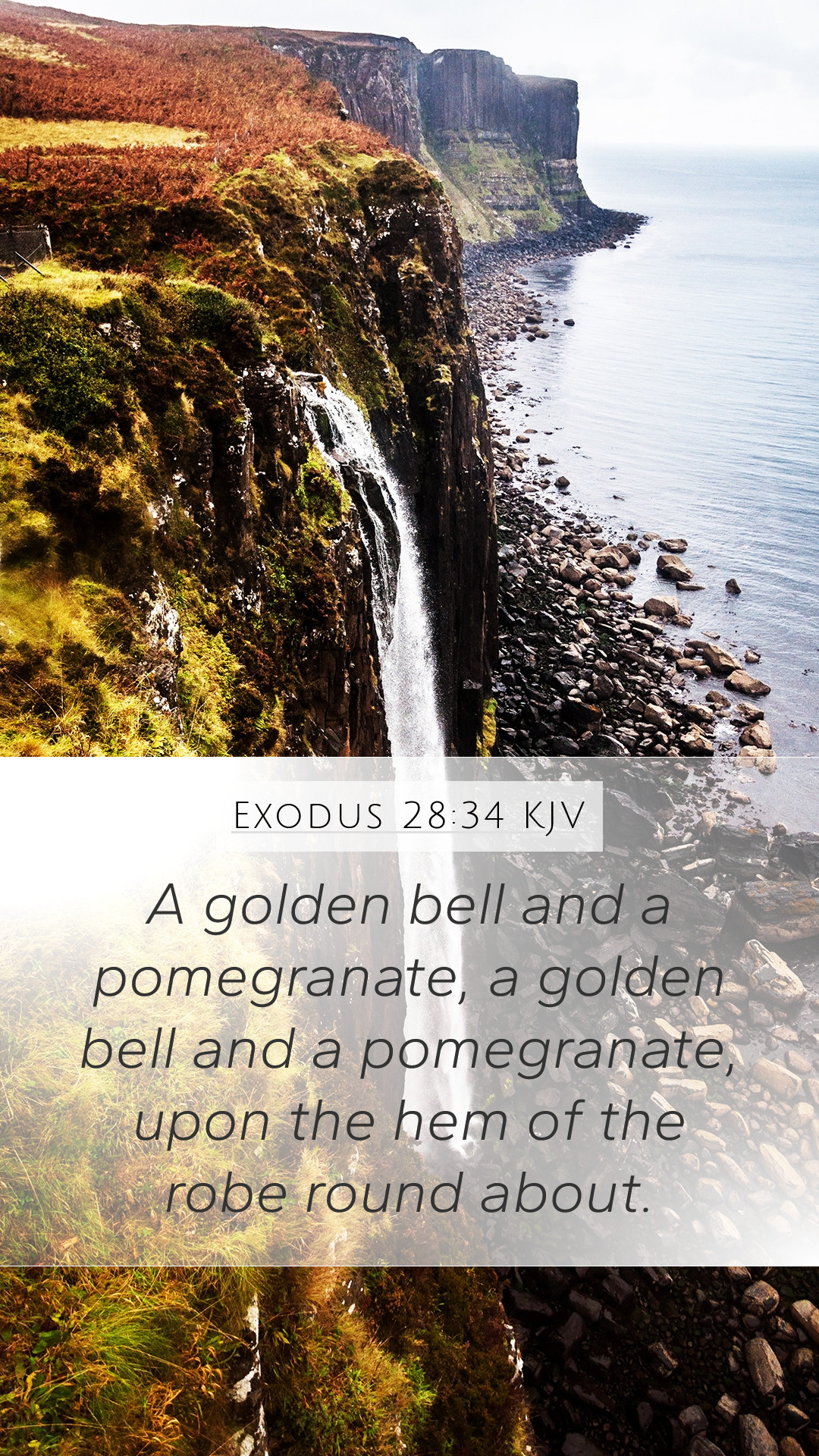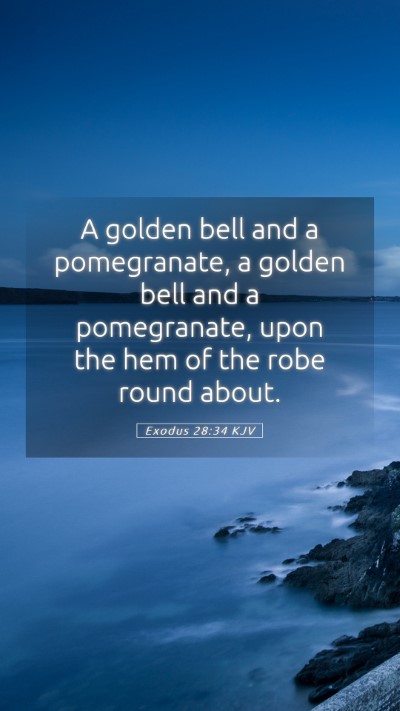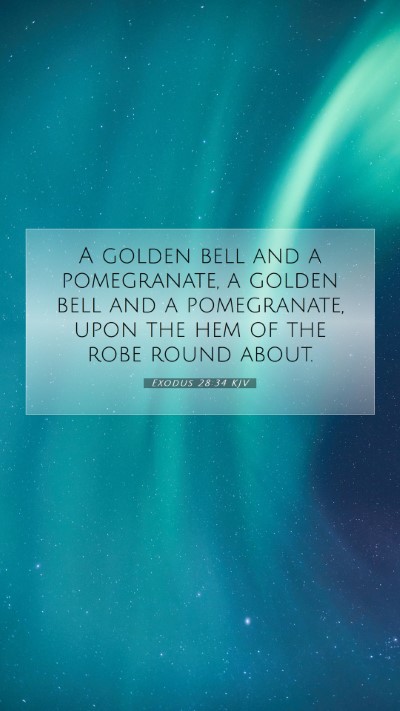Exodus 28:34 - Bible Verse Meaning and Commentary
Verse Overview: Exodus 28:34 states, "And a golden bell and a pomegranate, a golden bell and a pomegranate, shall be upon the hem of the robe round about." This verse describes a specific detail about the garments of the high priest, emphasizing both beauty and function, serving as a means of communication to God and the people.
Meaning and Significance of Exodus 28:34
The garments of the high priest were designed with great care and intention. The golden bells and pomegranates serve both a practical and symbolic purpose. Below, we explore insights from public domain commentaries to help in understanding the significance of this verse.
-
Commentary from Matthew Henry
Matthew Henry emphasizes the importance of the high priest’s garments as a representation of the holiness of God and the seriousness of the priestly role. The bells were meant to produce sound, which indicated the high priest's presence in the Holy Place, reminding the people of his intercession. The pomegranates symbolize fruitfulness and the blessings of God, implying that the high priest plays a crucial role in connecting the divine with the community.
-
Insights from Albert Barnes
Albert Barnes explains that these details were not merely decorative but were laden with meaning. The bells, ringing as the priest moved, symbolized the communication of God’s presence among His people. The pomegranates, often associated with righteousness due to their many seeds, represent the abundance of God’s blessings and the fruitful life that the priest was to embody. This design highlighted the set-apart nature of the priestly function.
-
Analysis by Adam Clarke
Adam Clarke provides a detailed examination of the symbolism inherent in this design. He suggests that the alternating pattern of golden bells and pomegranates served as a reminder to the Israelites of the reverence due to God. The priest's attire is portrayed as a medium through which God communicates with His people. Clarke also makes connections to the broader themes of divine worship and the importance of holiness in the life of the believer.
The Symbolism of Bells and Pomegranates
Both the golden bells and the pomegranates serve vital symbolic functions in the context of the priestly garments. Here’s a deeper look into their significance:
-
Golden Bells:
The bells represent the call to worship and the continual presence of God. Their sound signifies the active role of the high priest in mediating between God and humanity. These bells remind the believer of the need for continual communication and the importance of being attentive to the things of God.
-
Pomegranates:
The pomegranates have rich symbolism in biblical texts, often associated with abundance and prosperity. Their inclusion in the priest's garments suggests the blessings that flow from God and the importance of bearing fruit in ministry and personal conduct. They are emblematic of a life lived in accordance with God's commandments, producing the fruit of the Spirit.
Understanding Scripture through Exodus 28:34
The study of Exodus 28:34 provides critical insights for modern readers. Some key takeaways for deeper understanding:
-
The Importance of Divine Representation:
The high priest served as a representative for the people before God. Understanding this role helps readers grasp the significance of Christ as our High Priest in the New Testament, fulfilling the role of intercessor and mediator.
-
The Call to Holiness:
Just as the priest’s garments were made to reflect holiness, believers are called to live lives that reflect the character of God. This invites personal examination of how one's life might bear witness to God's presence.
-
Community and Worship:
The relationship between the priest and the community reflects the communal aspect of worship. It underscores the necessity of collective worship and the importance of each individual's role in the faith community.
Related Bible Cross References
- Leviticus 16:2: Discusses the high priest's responsibilities in the most holy place.
- Hebrews 4:14-16: Highlights Jesus as the great High Priest who understands human temptation.
- 1 Peter 2:9: Describes believers as a chosen generation, a royal priesthood.
Conclusion
Exodus 28:34 serves as a profound reminder of the seriousness of the priestly role in mediating between God and His people. Through the combined insights of Matthew Henry, Albert Barnes, and Adam Clarke, we gain a well-rounded understanding of the significance of the high priest's garments. These reflections not only enhance our knowledge of Scripture but also encourage us to live lives that resonate with holiness, purpose, and active communication with God.


